#Saltbush
Explore tagged Tumblr posts
Text
The map opposite shows another precise template in south-west New South Wales. Along survey lines at top left, and presumably off them too, pine and grey-box clumps run west-east and north-south roughly a kilometre apart; at centre similarly spaced plains sit in trees; elsewhere thin tree lines circle saltbush and grass plains.

"Country: Future Fire, Future Farming" - Bill Gammage and Bruce Pascoe
#book quotes#country#bill gammage#bruce pascoe#nonfiction#map#nsw#new south wales#australia#survey lines#pine#grey box#saltbush#grass plains#template#land management
0 notes
Photo
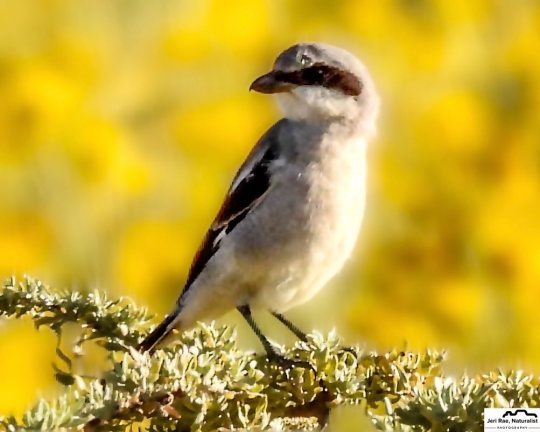
Past Photo Favorites - Loggerhead Shrike on a saltbush the yellow background is from a field of Golden Crownbeard flowers. #ScenesFromMyWalk #LoggerheadShrike #Shrike #ButcherBird #Carnivore #Birds #Bird #BirdPhotography #Birding #BirdingPhotography #Saltbush #PhotoByJeriRae (at Agua Fria, New Mexico) https://www.instagram.com/p/CoQwyVyrSnx/?igshid=NGJjMDIxMWI=
#scenesfrommywalk#loggerheadshrike#shrike#butcherbird#carnivore#birds#bird#birdphotography#birding#birdingphotography#saltbush#photobyjerirae
0 notes
Text



Plant of the Day
Sunday 25 August 2024
The salt-tolerance of the native annual plant Atriplex patula (spear saltbush, common orache, spear orach, spreading orach) means it can grow grow in coastal areas and the verges of salt-treated roads, where the soil has increased salinity. This species is a wildflower in the U.K. but can be invasive in some other parts of the world.
Jill Raggett
#Atriplex#spear saltbush#common orach#spear orach#spreading orach#wildflower#native#plants#coastal#Cromarty#scotland#beach#red flowers
119 notes
·
View notes
Text
#2026 - Ectopatria aspera - Rough Saltbush Moth

Photo by Patrick Wake
Also known as Hadena aspera, Xylina provida, Xylina canescens Walker, & Xylina saxatilis.
An addition to the IDs from Cooleenup Island, since two of the previous moths turned out to be the same species, and this one didn't.
This saltbush moth is found from Western Australian to New Zealand, and migrates long distances (although probably not that long).
2 notes
·
View notes
Photo

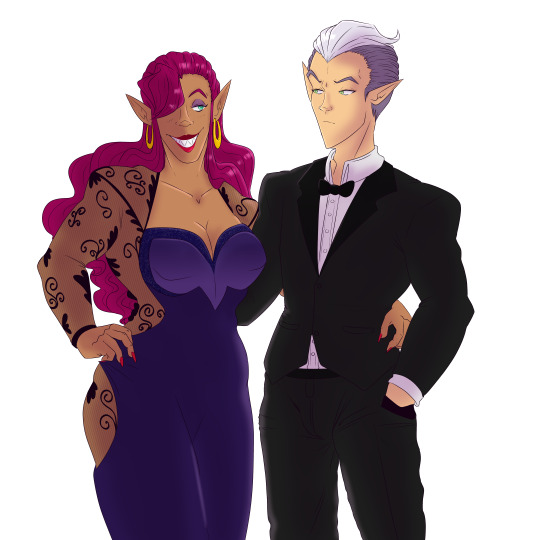
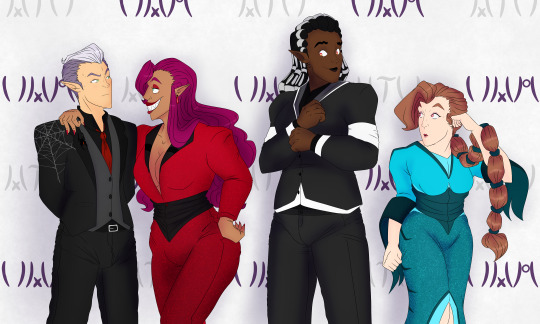
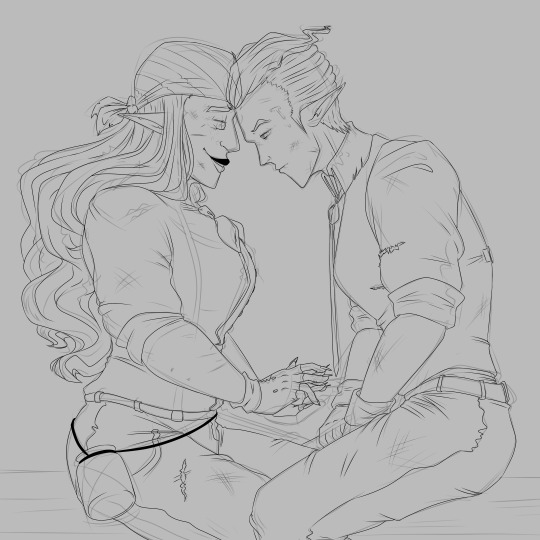

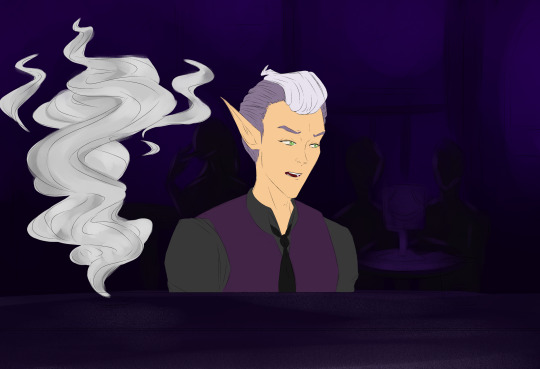
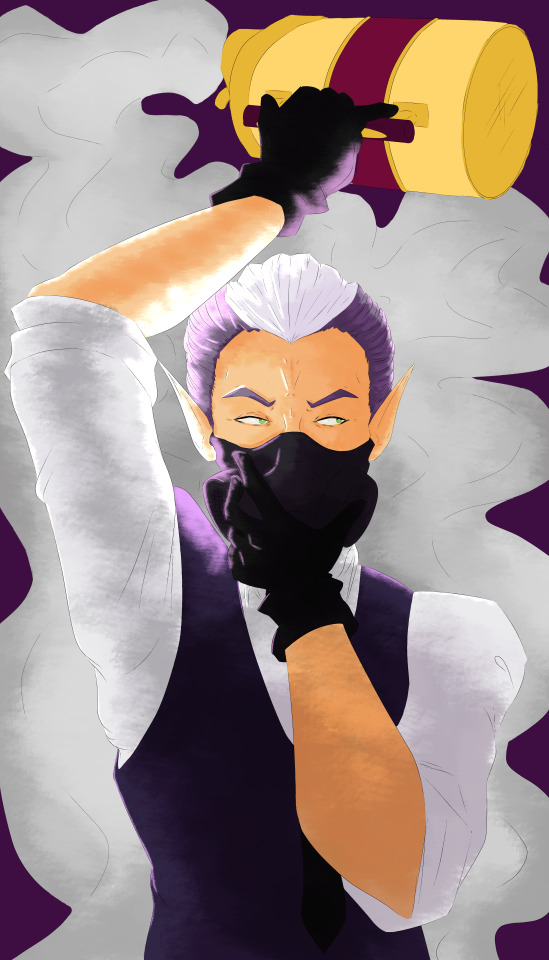
It’s been a while
here’s a collection of drawings and wips from twitter
13 notes
·
View notes
Text
Atriplex
2 notes
·
View notes
Text
🤠
#really missing 2020#when i lived in a house in the open desert for a month#yeah i have my big field of saltbush out back now but it's not the same 💔
0 notes
Photo

(via page-1-saltbush-bill-cartoon-fun-on-the-farm-invincible-1946-series.jpg (799×521))
0 notes
Text
BOTD: LeConte's Thrasher

Photo: Tony Morris
"As pale as desert sand is this wraith of the arid saltbush flats. It seldom flies unless closely pressed, instead running about with great speed on the open ground, its tail cocked up above its back. For many years after its discovery, Le Conte's Thrasher was considered a rare bird, because it lives in desert so barren and forbidding that few people would have thought to seek birds there."
- Audubon Field Guide
#birds#leconte's thrasher#birds of north america#north american birds#thrashers#mimids#passerines#lecontes thrasher#birds of the us#birds of mexico#birding#bird watching#birdblr#birblr#bird of the day#Toxostoma lecontei
40 notes
·
View notes
Text
When I first came to Ajax, when I stepped out of the red-and-yellow shuttle to plant my feet in the planet's sand, what I noticed before anything else was how pale the buildings are. On Mars, even in the warmest and most equatorial provinces, human habitation is universally black (or its best approximation), built from fulcrete and basalt and painted wood, to absorb the warmth of the sun against the bitter cold. On Ajax, far closer to its sun than Mars or even Earth, and with its 39-hour days, they must build for the opposite, towers of white or reflective silver with burrowed basements and sub-basements and sub-sub-basements underneath. The Ajactes live in cities the color of bone. The second thing I noticed, the thing that probably any other person would notice first, was the surfeit of salt in the air. I noticed this because it stung my eyes, like the threat of tears. As it happens, Ajax's oceans are significantly more saline than Earth's or Emieni's, and even its topsoil is a kind of hardpan composed of sand and dust cemented in a salt matrix. For the first several centuries of its habitiforming, it hosted an extremely carefully managed tight ecosystem of halophilic algae, bacteria and lichen painstakingly shipped from Earth and Mars, fed upon by a few species of brine shrimp. Gradually, the Hesperides introduced more species as the previous ones found their foothold: turtleweed and saltbush and cordgrasses, periwinkles and blue crabs and flamingos, suites of genetically-modified mangroves whose knees whistled in the morning and evening hours, bananas and maize and halotolerant rice. Most recently (within the last two hundred and fifty years) the Ajax Planetary Authority had grown increasingly bold and experimental: a breed of sheep brought out of cryogenic vaults on Old Earth to eat the masses of seaweed that washed ashore around the Southernmost Continent, whitetail deer both to manage the turtleweed scrubland that was covering the northern half of the Great Continent and to provide a stable meat source more robust than flamingos and periwinkles, a kind of gopher tortoise/diamondback terrapin hybrid that had proved encouragingly robust in the prairies of Mars, and even tigers to laze about in the shade of the forests that bordered saltmeadows full of bounding deer. All the Ajactes I spoke to seemed both personally invested in and extraordinarily proud of these tigers, showing me images and videos on their utility wedges, and several of the state television channels would cut away to live feeds of the animals sleeping or bathing their cubs or stalking prey.
62 notes
·
View notes
Text
Next story part of Saying Farewell to Armageddon

A forest had engulfed Baker Street. A romantic, sunlit forest with twisting trees covered in puffy, bright yellow blossoms bursting from upturned cobblestones. Dotted among them were smaller, dark trees heavy with bunches of magenta berries. Two of the feral children had already attacked the berries, their lips a deep purple.
Dityaa stopped helping Revati with the popcorn cart and started skipping towards the children. Revati sneezed loudly as the pollen hit her nose. She hated to admit it, but it was all rather pretty.
A few feet away, Brigadeiro was working outside the greenhouse along with the school students and Dusk. Mrs. Gupta was glaring at them with firm disapproval. “Does that fool have any idea how much water plants use?” She grumbled to Revati, who was pushing the cart towards everyone.
“I told you, Mrs. Gupta, these are all drought-resistant native Australian plants,” Brigadeiro replied as he stooped over an upturned cobblestone, spraying the mud below. There was a faint rustling sound, and a bush burst from the earth. The bush had peculiar finger-like mint-green leaves. Seconds later, it was covered in hot pink fleshy fruit.
“They look like your hair,” Revati remarked, faintly startled by the entire thing. “Here, try one,” Brigadeiro replied, picking a piece of fruit and handing it to Revati.
“I was only gone for less than an hour,” Revati pointed out.
“I know, if I had more time, I would have been able to turn that old fountain into a herb garden,” Brigadeiro said with a small shrug.
A fresh, salty-sweet flavor hit Revati’s tongue, and she swallowed loudly, staring at the fruit with astonishment. “It’s so unusual,” she said after a second of shocked silence.
“Enchylaena tomentosa, otherwise known as Ruby Saltbush; they used to grow wild all over the deserts of Australia,” Brigadeiro said as Revati devoured the rest of the berry.
“Australia? Is that one of the smaller Saturn moons?” Revati asked, and Brigadeiro chuckled.
“No, it’s an ancient old Earth country,” Brigadeiro said. As far as Revati knew, nobody had stepped foot on old Earth in almost a thousand years.
“Don’t laugh at me, you thought a dog was a shoe!” Revati snapped back, tossing the rest of the fruit onto the earth. The bush rustled, and a branch grabbed the bright pink berry, shoving it into the dirt.
“Is it supposed to do that?” Revati asked, faintly horrified.
“Oh yes, it’s just reabsorbing its nutrients! All plants are modified to be self-sustaining,” Brigadeiro said cheerfully, and he reached into his jumpsuit pocket once again. This time he pulled out a tiny, slim plastic box. He held it up to his eye, and it made a clicking sound.
“What’s that?” Revati asked suspiciously.
“Oh this is just my seed vault! I did my master's thesis project on native Australian plants,” he said as he showed Revati the inside of his vault. The inside of the box was filled with tiny balls of clear goo, each with a speck inside.
“Why are you doing this? These seeds would be worth a fortune on the black market,” Revati asked, and Brigadeiro shrugged.
Here's the corrected version of your text:
"The least I can do after you saved my life is to build a self-sustaining garden for your community," he said, plucking one of the gel balls out before closing the ball with a snap. "Besides, it’s fun! Gardening has always been my passion," he added as he walked to the old fountain.
Juniper and Aurora were busy filling the fountain with volcanic Martian dirt. "You agreed to help him on this project? I thought you hated him," Revati whispered to Aurora.
"Shhh! I don’t hate him! I just don’t want you getting into a mess! I’m willing to like anyone who makes us more food," Aurora hissed.
"Miss Juniper! Will you say our prayer before the planting?" Bridgadeiro asked, and Juniper rolled her eyes.
"Fine, O Goup, Divine Goddess of Fertility and Wellness. Bringer of cosmic balance and nurturer of all that grows. We seek Your bountiful grace and nurturing embrace. To foster life’s richness wherever it flows.
In Your lush gardens, where seeds turn to flowers, Grant us the strength to cultivate with care, To nurture each bud and blossom with love, And rejoice in the abundance we share.
May Your fertile essence inspire our lands, With a symphony of life, vibrant and bright, Guiding our steps in the dance of creation, Under Your watchful, life-giving light. Amen." Juniper finished.
"Amen! That was lovely! You could be a high priestess," Bridgadeiro smiled.
"No thanks," Juniper replied as Bridgadeiro pushed the gel ball into the soil. Bridgadeiro then pulled out the bottle of serum, which was now half empty. "Two pumps," Bridgadeiro smiled, pumping the soil. A vine-like plant with sharp leaves sprang out of the fountain, seconds later covered in heavy greenish-yellow vegetables. "Bush banana, very high in protein, but it tastes best cooked," Bridgadeiro smiled, gesturing to the plant.
Bridgadeiro reached for his seed vault again, and Revati grabbed his hand. "No, you've given us more than enough! Stop wasting your serum," she said firmly.
"What the hell is that doing here?" Nanni's voice suddenly screamed. Nanni was standing next to the popcorn cart, pointing at the broken android.
"We found it in the maze, right after I sucked a bunch of black sand out of Queen Victoria’s bosom," remarked Dityaa. Dityaa was sitting on the ground, fashioning a flower crown out of several yellow flower-covered twigs.
"Actually, I found it first. She warned me that something called 'the spider' is coming," Revati explained. Nanni was trembling, shaking her head from side to side.
"You need to burn that thing! The only good thing that came from it was your sister!" Nanni said, and Dityaa glanced up, looking faintly confused.
"I came from that? Didn’t I grow in Anna’s body like Sissy?" Dityaa asked curiously, and Nanni pursed her lips together.
"No, you grew in that maternity droid… lots of babies did before the war," Nanni said evasively.
"I did! Then we should save it, we should dress it up and put it on display," Dityaa smiled. Dityaa slowly got up and then tenderly placed the flower crown on the android's head. "Your mother can't see this! Go make a fire right now," hissed Nanni, ripping the crown off.
"It's made out of solid metal! I can't make a fire hot enough to burn it," Revati pointed out.
"You have no idea! This thing killed over a dozen people! It destroyed ripped their hands off!" Nanni grimaced, kicking it.
"Really? It seemed more interested in saving us," Revati said dubiously.
"It's an empty shell, you can't trust emptiness! It could be filled with anything," Nanny said firmly, and Aurora cleared her throat slightly.
"Mistress?" She asked.
"Hmm," Revati replied.
"We could take the android to the blacksmith forge; they would be able to melt metal," Aurora said with a small shrug.
"The blacksmith forge, the one in the medieval faire? I'm not in the mood to have rancid urine thrown all over me," Revati shuddered.
"They use it to brush their teeth," Dityaa said helpfully.
"I know a back way of getting in, I use it when I visit my girlfriend," Aurora admitted, blushing bright red.
"Girlfriend?" Revati cried with surprise.
"Yes, she's the daughter of the guy who plays the castle's beekeeper," Aurora admitted with a small shy smile.
"Is that where our honey comes from?" Revati asked, and Aurora nodded meekly.
"Well, you are a lady full of surprises!" Revati said, and Aurora looked pleased.
"I always meet her at noon; we have plenty of time to get the android there," Aurora said. Revati glanced up at the sky. "It’s hard to tell what time it is; the trees are blocking the sun," Revati grimaced with annoyance. "It's 10:32 AM circus Martian time," Bridgadeiro said helpfully, flipping over his wrist. A glowing clock had been tattooed onto his skin. Revati flinched, and Bridgadeiro smiled reassuringly.
"Don’t worry! It’s just a standard tattoo clock; it doesn’t think for itself," Bridgadeiro said reassuringly, and Revati sighed with relief.
"Can I come too? I’m dying to see the inside of Medieval faire!" Dityaa remarked.
"Only if you go clean yourself up; you’re starting to smell like a blocked drain," Revati firmly replied.
"I smell like vanilla and fresh flowers!" Dityaa shrieked back before storming off in the direction of their home.
"Medieval Faire. Before the tornado, Revati only ever visited Medieval Faire once a week. Revati would slip her hand into her father's, and together they would head down to trade carrots. Father had at one point asked if they wanted any tomatoes, and Lady Morganna shrieked it was "new world poison." Out of all the actors, the residents of Medieval Faire were the most authentic.
#nanowrimo#nanowrimo2023#science fiction#life on mars#speculative worldbuilding#speculative fiction#scifi#ya scifi#ya dystopia#writing science fiction#creative writing#writing goals
45 notes
·
View notes
Text
youtube
Millie’s garden is ambitious, in a relatively small space she is trying to grow food and flowers, create a multi-use functional outdoor space for people and offer habitat to the wild visitors. One of the simplest ways to do this is to add water. Just like we include a diversity of plant species, offering a diversity of water points will cater for different visitors.
WATER POINT ONE:
In a small garden bed near the backdoor, Millie wants to set up a simple water pot. I am using an old copper pot, which in my experience works well as a low-maintenance pond. A small amount of copper dissolves in the water, preventing algae growth and disrupting the lifecycle of mosquito larvae. The copper means it is not suitable for fish or frogs but works well as a bath and drinking point for birds. It also offers a great little microclimate for a range of water plants.
To set up a water pot:
- Pick a position that gets at least 6 hours of sun and ensure it I relatively level
- Put a shallow layer of gravel in the base
- Place a few bricks and rocks to act as planting shelves and landing perches
- Fill with water.
NOTE If you are planning to add fish, wait at least 24 hours to ensure contained chemicals such as chlorine can evaporate, or add a water conditioner.
When it comes to plants, those that like water are as diverse as those on land, with some preferring to be fully submerged, and others just liking wet feet. In many cases, aquatic plants grow well in small pots, as they can access water and nutrients from the water around them.
All can be potted in a similar manner –
- Use a heavy sandy loam, not lightweight, bark-based potting mix. You don’t want loads of nutrients in the mix either, as they will just dissolve into the water.
- Position the plant quite low in the container and cover the mix with a layer of clean sand and a layer of gravel. This holds everything in place when plants are submerged.
- Add a stick to ensure safe passage in and out of the water for any small birds.
WATER POINT TWO:
As well as the ground-level water pot, Millie is keen to take her habitat game to new heights! The boundary fence is made of ironbark posts and steel mesh, and from the window, she has observed stacks of birds use it to stop and survey the surrounding garden. That indicates it will also be a great spot to safely provide water for them, out of reach of predators.
- She attaches 2 galvanised steel brackets to a post and sits a large terracotta saucer on top. Some silicone is used to hold the saucer lightly in position, and rocks are added to balance the bath and offer a route in and out of the bath.
- As a shallow elevated bath, this will need constant filling, so to ensure a consistent supply she installs some dripper to an irrigation timer.
- This runs 1-2 times a day to flush the bath with clean water and ensure the birds can set their watch to it.
The fence line is already heavily planted, with climbing native and exotic clematis, espaliered feijoas and even a callistemon. But there is always space for more! Under the drip of the baths Millie plants a native groundcover, austral bugle.
WATER POINT THREE :
The last water point offer is down low, a saucer of water placed on the ground near a habitat pipe installed for reptiles. To make the offering even more enticing, Millie plants some ruby saltbush.
We all spend a lot of spend a lot of time thinking about the garden. Carefully planning plantings and displays, timing vegie sowing for each season, and even planning garden parties! But the moments that fill the garden heart with joy are when those unexpected wild visitors pop in. And there are so many ways you can ensure they have an open invitation.
Featured Plants:
NARDOO - Marsilea drummondii
SWAMP GOODENIA - Goodenia humilis
AUSTRAL BUGLE - Ajuga australis
RUBY SALTBUSH - Enchylaena tomentosa
#Gardening Australia#solarpunk#australia#gardening#garden#water points#bird bath#barrel pond#water dish#water pot#birds#lizard#Youtube
7 notes
·
View notes
Photo



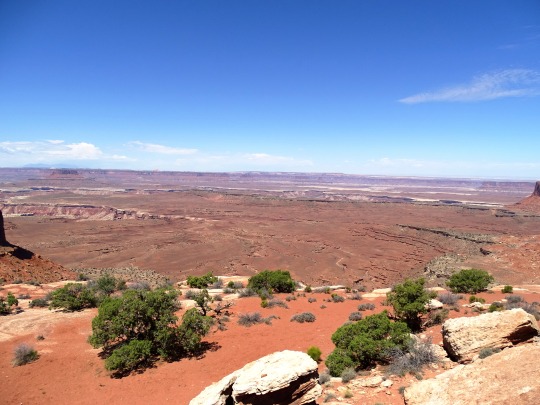


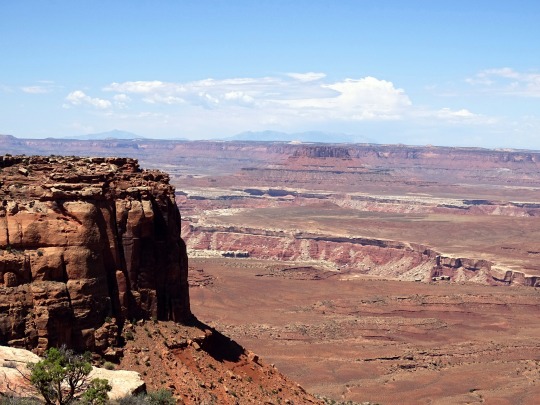
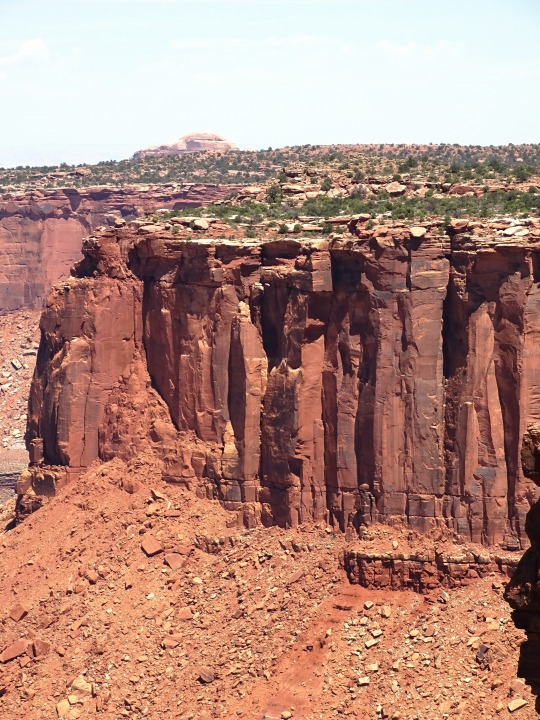
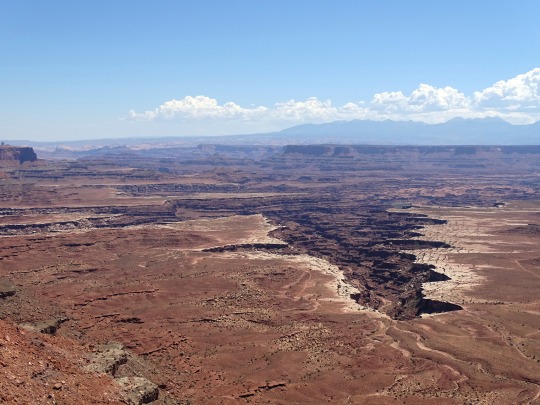
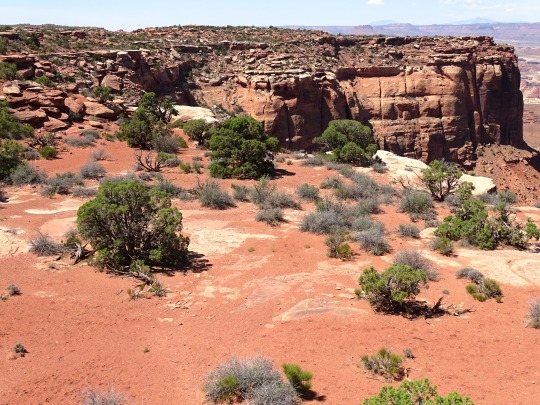
Buck Canyon Overlook, Canyonlands National Park (No. 4)
Canyonlands National Park contains a wide variety of plant life, including 11 cactus species, 20 moss species, liverworts, grasses and wildflowers. Varieties of trees include netleaf hackberry, Russian olive, Utah juniper, pinyon pine, tamarisk and Fremont's cottonwood. Shrubs include Mormon tea, blackbrush, four-wing saltbush and cliffrose.
Cryptobiotic soil is the foundation of life in Canyonlands, providing nitrogen fixation and moisture for plant seeds. One footprint can destroy decades of growth.
Source: Wikipedia
#Buck Canyon Overlook#Canyonlands National Park#desert#geology#bush#grass#flora#nature#landscape#countryside#tourist attraction#landmark#Colorado Plateau#Island in the Sky#original photography#summer 2022#USA#Utah#Western USA#red rock#rock formation#red sand#view#blue sky#clouds#butte#mesa#cliff
97 notes
·
View notes
Text



Seaberry saltbush, Rhagodia candolleana at Brighton Beach, Christmas 2024
3 notes
·
View notes
Text
#2025 - Ectopatria clavigera - Club-bearing Saltbush Moth

AKA Namangana clavigera & Diplonephra clavigera.
There's quite a lot of salt-loving vegetation on Cooleenup Island. Quite a lot more in fact, since the opening of the Dawesville Cut changed the hydrology of the Peel Inlet, and among other things, killed every Swamp Paperbark on the island. Kitchen Lake behind the field station, for example, is all dead trees surrounded by salt-flat vegetation now.
The moth in question is a Western Australia endemic, but there are 19 species in the genus, most of whom are also called Saltbush Moths, so I can take a wide guess what their prefered habitat is.
4 notes
·
View notes
Text
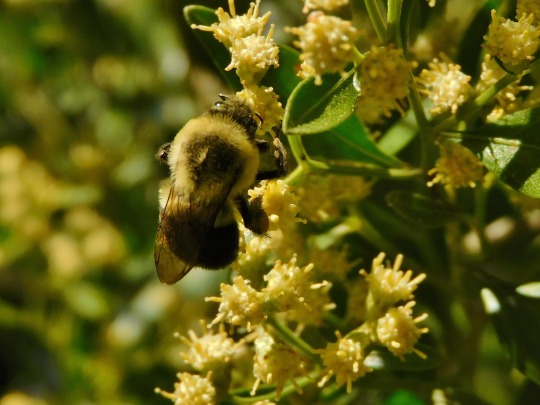
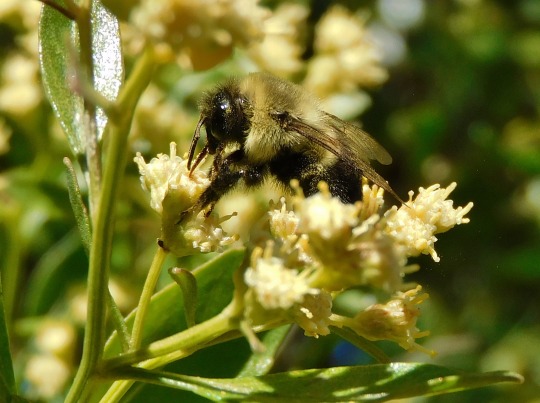
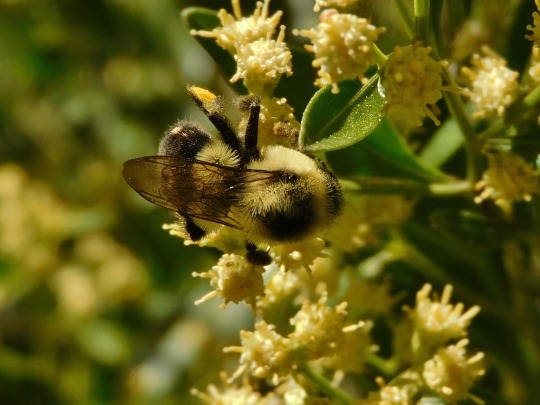

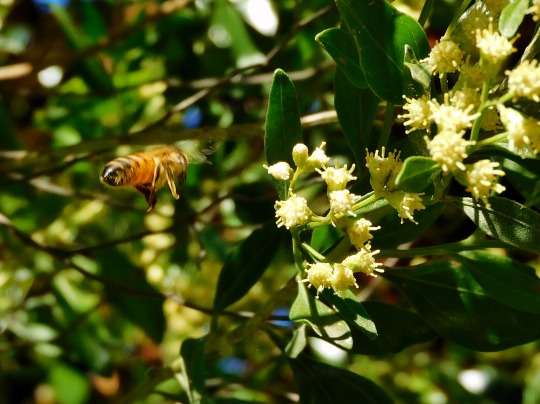
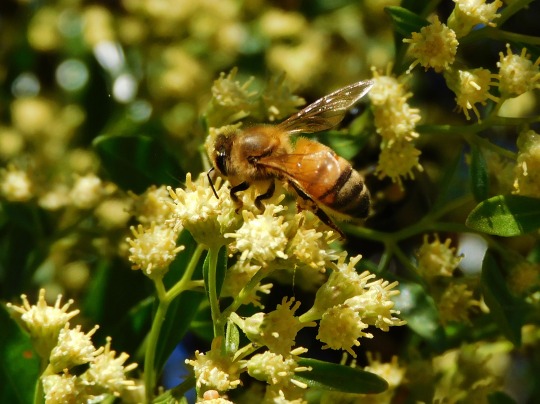
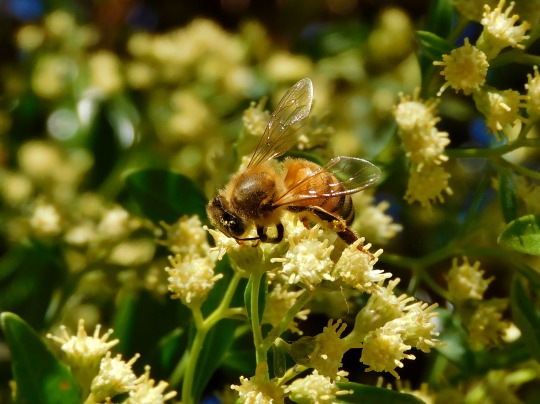

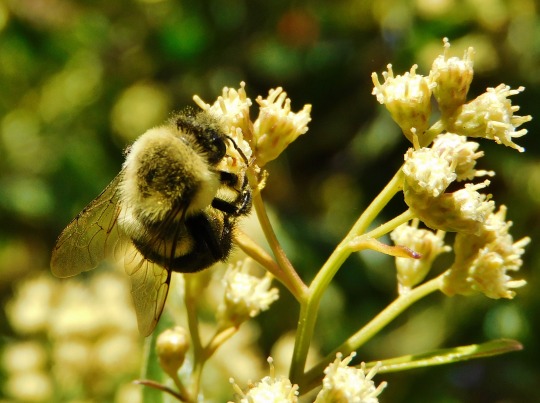
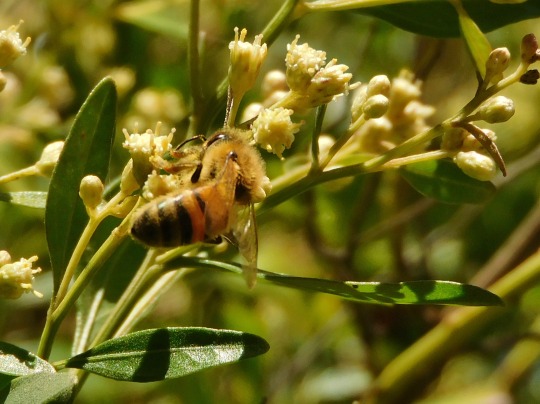
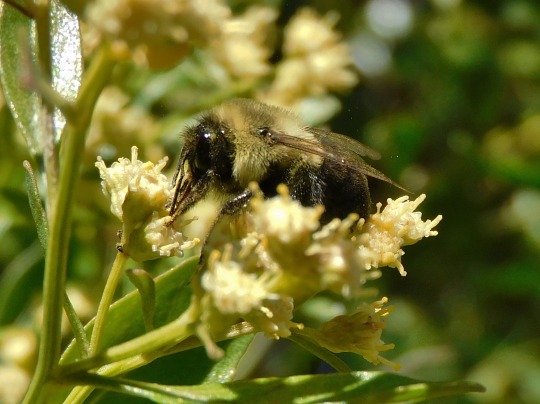
I could not pick among these photos of Bees (Bumble and Honey) on the Sea Myrtle Bush (Baccharis halimifolia) today. Turns out Sea Myrtle is a bush of many names... Consumption-Weed… Coyote Bush… High-tide Bush… Saltbush… Salt Marsh Elder….Silvering... Groundsel Tree.
#nature#my photography#bees#backyard nature#honey bee#nature photography#bumble bee#wildlife photography#insects#native plants
14 notes
·
View notes